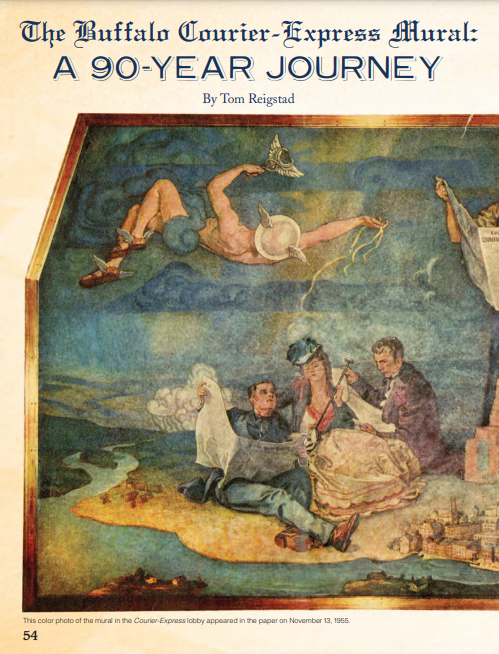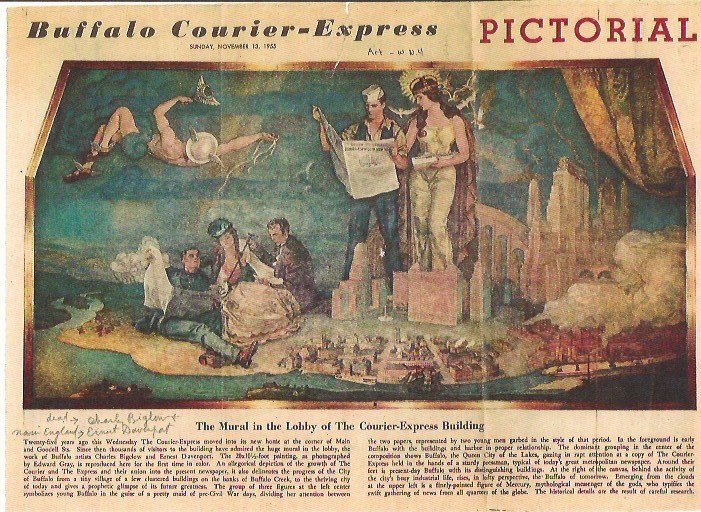Courier-Express Mural
The Buffalo Courier-Express Mural: A 90-Year Journey
When the Buffalo Courier-Express published its final edition on September 19, 1982, reporter Sara Solovitch’s lead story lamented that the passing of a local artist, Ernest Davenport, six days earlier had seemed like an omen of the death of the 150-year-old newspaper. Davenport and a fellow artist had painted the iconic mural in the lobby of the “new” Courier-Express building for its opening in 1930. The mural dominated that lobby for over 55 years. Now, like the Courier-Express, the mural itself may be doomed. Clumsily removed from the lobby in 1987, it has languished in storage ever since. This year marks the 90th anniversary of the mural’s creation, an ideal time to examine its significance and survival.
The Courier and The Express
The Buffalo Courier had its roots in the Western Star, Buffalo’s first daily newspaper, which originated in 1834. Ownership changed over the next few years until 1846, when it evolved into the Buffalo Courier. Legendary Buffalo journalists were affiliated with the paper. Throughout the second half of the 19th century, a succession of newspaper luminaries – Guy H. Salisbury (“The Charles Lamb of Buffalo”), poet-editor David Gray, the notable editor and drama critic Thomas Kean and another poet-editor, Joseph O’Connor – enhanced the paper’s reputation. On May 19, 1897, First Ward boss and shipping tycoon William J. “Fingy” Conners bought the Buffalo Courier. Well into the 20th century, Conners’ paper competed with five other English-language daily news - papers in Buffalo: the News, Times, Enquirer, Commercial and Express. The Express was its chief rival since it was the Courier’s only morning competition and since the paper had as storied a history as the Courier.
The Buffalo Morning Express was established in 1846. Twenty years later in 1866, the Express Printing Company, a lucrative subsidiary, was founded. Samuel L. Clemens (Mark Twain) joined the Express soon after as co-owner and managing editor. From August 1869 to January 1871, Twain not only edited the Express but also contributed over 100 editorials, feature stories and humorous squibs. Not long after Twain’s departure, James N. Matthews took over sole ownership. His son, George E. Matthews, succeeded his father as publisher. Eventually, a third-generation Matthews – Burroughs Matthews – led the Express. The paper gained national recognition for its Sunday Illustrated Express, a pioneer in pictorial journalism.
Despite being arch competitors, an unlikely emergency “merger” of the two papers occurred in April 1885, when a fire destroyed the Express building at Washington and Exchange streets. The Courier generously offered its rival the use of its printing presses so that the paper would not have to cease production…
TO READ THE FULL ESSAY, DOWNLOAD the PDF.


